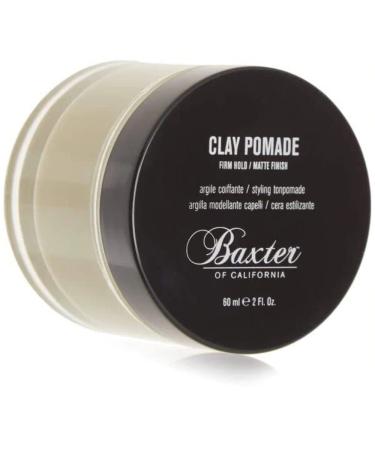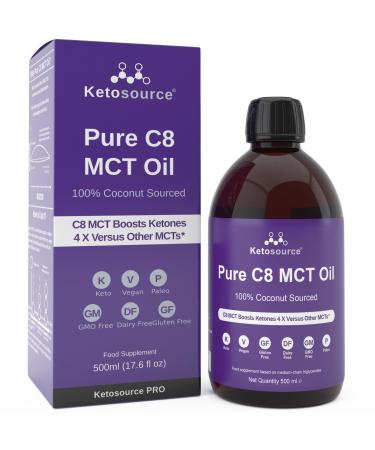Köycegiz Honey Pine Honey and Köycegiz Honey Flower Honey Köycegiz Honey Pine Honey Pine honey, the majority of which is produced in Köycegiz and its surrounding areas, is produced not by flower pollen but by bees using the secretion of the pine cotton beetle (commonly known as the basra beetle) that lives on certain pine tree species specific to the climate of Köycegiz and its surroundings. 3 4 of the world's pine honey production is meticulously processed by our beekeepers in the Aegean region, gracing the tables of you, our gourmets. The journey of pine honey begins with the basra beetles sucking the sap of the pine tree. Bees collect the colorless secretion produced by these insects by wandering through our pine forests. Processing the secretion with enzymes they produce on the way to the hive, the bees then evaporate the water in the honeycombs, maturing it. This results in Köycegiz Honey, a highly mineral-rich pine honey. Prepared with the utmost care by our beekeepers and meticulously tested in our laboratory, Köycegiz Honey Pine Honey is darker in color than most other Köycegiz Flower Honeys. It can be stored for a long time without crystallization, and its taste and aroma are unique. Blended with the unique resinous flavor, pleasant aroma, and exquisite taste of the Aegean's unique red pine trees, we offer Köycegiz Honey Pine Honey to you with the privilege of Köycegiz Honey, a team of experts in the field. Our Certificates of Analysis are collected from honey samples collected during the harvest season, thanks to the diligence of our bees and the great dedication of our beekeepers. All our honey is analyzed regularly at accredited universities (Hacettepe University and Mugla University) under the supervision of Turkey's leading honey experts. All of our purity analyses, conducted based on the Turkish Food Codex Honey Communiqué, are available alongside our products. If we consider these honey parameters separately, proline is the dominant amino acid in our Köycegiz Honey and Pine Honey. Its amount is a quality criterion for Köycegiz Honey and Pine Honey. A high or low proline value indicates whether the bees are harvesting nectar from nature during the Köycegiz Honey and Pine Honey production period. According to the Turkish Food Codex Honey Communiqué, the minimum proline level required for our Köycegiz Honey and Pine Honey is 300 mg kg. Accordingly, the percentage in our Köycegiz Honey and Pine Honey is 635.01 mg kg. Diastase is the most abundant enzyme in our Köycegiz Honey and Pine Honey. This enzyme is produced by bees during the ripening of Köycegiz Honey and Pine Honey, secreted from their stomachs, and transferred to the Köycegiz Honey and Pine Honey. The value of this enzyme indicates whether the Köycegiz Honey and Pine Honey has been heat-treated. According to the Turkish Food Codex Honey Communiqué, the diastase value must be at least "8." Accordingly, the value in our Köycegiz Honey and Pine Honey is "8.40." The moisture value refers to the amount of water in Köycegiz Honey and Pine Honey. It plays an important role in determining the maturity and shelf life of Köycegiz Honey and Pine Honey. When the bees deposit the moisture content in the honeycomb cells, the moisture content is approximately 0-35 . The bees reduce this moisture content below 0 by balancing the hive temperature and beating their wings. A moisture content above 0 indicates that the beekeepers harvested Köycegiz Honey and Pine Honey early. The maximum moisture content in the Turkish Food Codex Honey Communiqué is 0.12. This value is measured to determine the mineral and acid content in Köycegiz Honey. Electrical conductivity can vary depending on the amount of organic acids, minerals, and proteins present in Köycegiz Honey, and thus, distinguishing Köycegiz Honey and Pine Honey from Secretion or Flower Honey is achieved. According to the Turkish Food Codex Honey Communiqué, the electrical conductivity of Secretion Honey must be at least 0.8 mS cm. The electrical conductivity value in Köycegiz Honey and Pine Honey is 1.24 mS cm. Free acidity and pH are the primary elements determined by the amount of organic acids, minerals, proteins, and carbohydrates present in Köycegiz Honey and Pine Honey. This application plays an important role in the fermentation of Köycegiz Honey and the determination of Secretion Honey. The acids found in Köycegiz Honey and Pine Honey not only affect the taste and flavor of the honey, but also prevent the growth of microorganisms in it. According to the Turkish Food Codex Honey Communiqué, the free acidity value of Köycegiz Honey and Pine Honey must not exceed 50 meq kg. Our Köycegiz Honey and Pine Honey has a free acidity value of 1.28 meq kg. Hydroxymethylfurfural (HMF) is the HMF content in Köycegiz Honey and Pine Honey. The amount of HMF increases under the influence of parameters such as heat treatment and prolonged storage in adverse conditions. HMF is formed by the condensation of the carbonyl groups of reducing sugars in Köycegiz Honey and Pine Honey with the amine groups of amino acids and proteins. The HMF value is an indicator of the freshness of Köycegiz Honey and Pine Honey. According to the Turkish Food Codex Honey Communiqué, the HMF content in Köycegiz Honey and Pine Honey must be no more than 40 mg kg. The HMF content in Köycegiz Honey and Pine Honey is 11.57 mg kg. C4 and Delta C13 values in Köycegiz Honey and Pine Honey C13 analysis in Köycegiz Honey and Pine Honey is the most common method used for the determination of cane sugar, corn-based sugar, and glucose-based sugar. By considering the different photosynthetic cycles of plants, it provides information about whether Köycegiz Honey and Pine Honey has been adulterated based on the isotope ratio of Köycegiz Honey and Pine Honey and honey protein. According to the Turkish Food Codex Honey Communiqué, the C4 sugar content in Köycegiz Honey and Pine Honey, as a result of the process between the C13 honey and protein fractions, must be no more than 7 . The C4 sugar content in Köycegiz Honey and Pine Honey is 1.25 . Sugar profile analysis in Köycegiz Honeydew Honey: Because Köycegiz Honeydew Honey is a carbohydrate food, its dry matter content is approximately 99 . Fructose and Glucose constitute 95 of this. These two monosaccharides, which give Köycegiz Honeydew Honey its flavor, are formed by the inversion of sucrose found in plant nectar or in the secretions of insects living on plants, using the invertase enzyme. According to the Turkish Food Codex Honey Communiqué, the sugar profile and ratio in Secretion Honeydew Honeys is at least 45g per 100g, and the fructose glucose ratio is between 1.0 and 1.4. In Köycegiz Honeydew Honeydew Honey, the Fructose Glucose ratio is 56.78 and 1.3. There should be no sucrose in Köycegiz Honeydew Honeydew Honeydew. The bee inverts all the nectar it collects and breaks it down into Fructose and Glucose until no sucrose remains. The presence of sucrose in Köycegiz Honey Pine Honey is an indication of adulteration. Pollen Analysis The honey-bearing plants that are the source of Köycegiz Honey Pine Honey have a large resource in our country. Turkey has a diversity of approximately 450 thousand different plants, varying depending on the region. Köycegiz region is also an important location hosting Pine Honey. Pollen analyses performed on honey provide useful information in finding their geographical and floral origins. As a result of pollen analysis, the determination of the nectar-bearing plants in that region, the naming of Köycegiz Honey Pine Honey, and the quality and yield of Köycegiz Honey Pine Honey are determined. Phenolic and Antioxidant analysis in Köycegiz Honey Pine Honey Antioxidants are compounds that prevent cell damage by inhibiting the formation of free radicals in the body. These reactions can be toxic in foods and cause health problems. In short, antioxidant activity can reduce oxidative reactions in the body. Köycegiz Honey and Pine Honey are known to be rich in enzymatic and non-enzymatic antioxidants. Köycegiz Honey and Pine Honey are rich in antioxidant compounds such as flavonoids and phenolic acids, as well as tocopherols, alkaloids, and ascorbic acid. The color of Köycegiz Honey and Pine Honey generally depends on the carotenoids and flavonoids it contains. Dark-colored honeys have a higher antioxidant content. In short, honey is rich in antioxidants and can vary depending on the region and season. The phenolic compound content in Köycegiz Honey and Pine Honey is 664.005 mgGAE kg. Köycegiz Honey Flower Honey With the arrival of spring, colorful flowers bloom on the Anatolian plateaus, with scents unlike any other perfume. Our beekeepers set up their hives in the most beautiful highlands. This is how the story of Köycegiz Honey Flower Honey begins. Bees collect the nectar secreted by flowers, the main source of honey, and store it in their honey stomachs. This nectar, then deposited in the honeycombs, is then re-drinked by worker bees and released back into the honeycombs. This way, they combine the honey with their own enzymes, creating a richly nutritious flavor. The fluttering of the worker bees evaporates the water from the nectar in the honeycombs and ripens it. Therefore, the crystallization of Köycegiz Honey Flower Honey is a natural phenomenon. The flower honey offered by Köycegiz Honey is just a click away, in its most natural form, just like in the hive! Our Certificates of Analysis Köycegiz Honey is sampled from honey milked during the season, thanks to the diligence of our bees and the great dedication of our beekeepers. All our honey is analyzed regularly at accredited universities (Hacettepe University and Mugla University) under the supervision of Turkey's leading honey experts. All of our purity analyses, conducted based on the Turkish Food Codex Honey Communiqué, are available alongside our products. If we consider these honey parameters separately, proline is the dominant amino acid in our Köycegiz Honey and Flower Honey. This amount is a quality criterion for Köycegiz Honey and Flower Honey. A high or low proline value indicates whether the bees were collecting nectar from nature during the Köycegiz Honey production period. According to the Turkish Food Codex Honey Communiqué, the minimum proline level required for our Köycegiz Honey and Flower Honey is 300 mg kg. Accordingly, the level in our Köycegiz Honey and Flower Honey is 442.69 mg kg. Diastase is the most abundant enzyme in our Köycegiz Honey and Flower Honey. This enzyme is produced by bees during the ripening of Köycegiz Flower Honey, secreted from their stomachs, and transferred to the Köycegiz Flower Honey. The value of this enzyme indicates whether the Köycegiz Flower Honey has been heat-treated. According to the Turkish Food Codex Honey Communiqué, the diastase value must be at least "8." Accordingly, the value in our Köycegiz Flower Honey is "10.68." The moisture content indicates the amount of water in Köycegiz Flower Honey. It plays an important role in determining the maturity and shelf life of Köycegiz Flower Honey. When the bees deposit the moisture content in the honeycomb cells, the moisture content is approximately 0-35 . The bees reduce this moisture content below 0 by balancing the hive temperature and beating their wings. A moisture content above 0 indicates that the Köycegiz Flower Honey has been harvested early by beekeepers. According to the Turkish Food Codex Honey Communiqué, the maximum moisture content is 0.28. This value is measured to determine the mineral and acid content of Köycegiz Flower Honey. Electrical conductivity can vary depending on the amount of organic acids, minerals, and proteins present in Köycegiz Flower Honey, and is therefore used to distinguish between secretion and blossom honey. According to the Turkish Food Codex Honey Communiqué, the maximum electrical conductivity for flower honey should be 0.8 mS cm. The electrical conductivity value for Köycegiz Flower Honey is 0.45 mS cm. Free acidity and pH are the primary elements determined by the amount of organic acids, minerals, proteins, and carbohydrates present in Köycegiz Flower Honey. This process plays an important role in the fermentation of Köycegiz Flower Honey and the determination of secretion honey. The acids found in Köycegiz Flower Honey not only affect the taste and flavor of Köycegiz Flower Honey, but also prevent the growth of microorganisms in it. According to the Turkish Food Codex Honey Communiqué, the free acidity value of Köycegiz Flower Honey must not exceed 50 meq kg. The free acidity value in our Köycegiz Flower Honey is 21.92 meq kg. Hydroxymethylfurfural (HMF) is the HMF content in Köycegiz Flower Honey. The amount of HMF increases under the influence of parameters such as heat treatment and prolonged storage in adverse conditions. HMF is formed by the condensation of the carbonyl groups of reducing sugars in Köycegiz Flower Honey with the amine groups of amino acids and proteins. The HMF value is an indicator of the freshness of Köycegiz Flower Honey. According to the Turkish Food Codex Honey Communiqué, the HMF content in Köycegiz Honey Flower Honey must be no more than 40 mg kg. The HMF content in Köycegiz Honey Flower Honey is 17.55 mg kg. C4 and Delta C13 values in Köycegiz Honey Flower Honey C13 analysis in Köycegiz Honey Flower Honey is the most common method used to determine the presence of cane sugar, corn-based sugar, and glucose-based sugar. By considering the different photosynthetic cycles of plants, it provides information about whether Köycegiz Honey Flower Honey has been adulterated based on the isotope ratios of Köycegiz Honey Flower Honey and honey protein. According to the Turkish Food Codex Honey Communiqué, the C4 sugar content in Köycegiz Honey Flower Honey, as a result of the process between the C13 honey and protein fractions, must be no more than 7 . The C4 sugar content in Köycegiz Honey Flower Honey is 0.83 . Sugar profile analysis in Köycegiz Flower Honey: Because Köycegiz Flower Honey is a carbohydrate food, its dry matter content is approximately 99 . Fructose and Glucose constitute 95 of this. These two monosaccharides, which give Köycegiz Flower Honey its flavor, are formed by the inversion of sucrose found in plant nectar or in the secretions of insects living on plants, by the invertase enzyme. According to the Turkish Food Codex Honey Communiqué, the sugar profile and ratio for Flower Honey is at least 60g per 100g, and the fructose glucose ratio is between 0.9 and 1.4. In Köycegiz Flower Honey, the Fructose Glucose ratio is 64.16 and 1.28, respectively. There should be no sucrose in Köycegiz Flower Honey. The bee inverts the nectar it collects, breaking it down into fructose and glucose until no sucrose remains. The presence of sucrose in Köycegiz Flower Honey is an indication of adulteration. Pollen Analysis: The honey-bearing plant species that are the source of Köycegiz Flower Honey are abundant in our country. Turkey boasts a diverse range of approximately 450,000 different plants, varying depending on the region. The Köycegiz region is also a significant location for Pine Honey. Furthermore, because our local beekeepers are nomadic, they leave their hives throughout Turkey in spring. The bees then enjoy this bounty of plants and produce honey. Pollen analyses performed on these extracted honeys provide useful information in determining their geographic and floral origins. Pollen analysis determines the region's nectar-bearing plants, the naming of Köycegiz Flower Honey, and the quality and yield of Köycegiz Flower Honey. Phenolic and Antioxidant Analysis in Köycegiz Flower Honey: Antioxidants are compounds that prevent cell damage by inhibiting the formation of free radicals in the body. These reactions can be toxic in foods and cause health problems. In short, antioxidant activity can reduce oxidative reactions in the body. Köycegiz Flower Honey is known to be rich in enzymatic and non-enzymatic antioxidants. Köycegiz Flower Honey is rich in antioxidant compounds such as flavonoids and phenolic acids, as well as tocopherols, alkaloids, and ascorbic acid. The color of Köycegiz Flower Honey generally depends on its carotenoid and flavonoid content. Dark-colored honeys have a high antioxidant content. In short, honey is rich in antioxidants, and its content can vary depending on the region and season. The phenolic compound content of our Köycegiz Flower Honey is 482.46 mgGAE kg.













